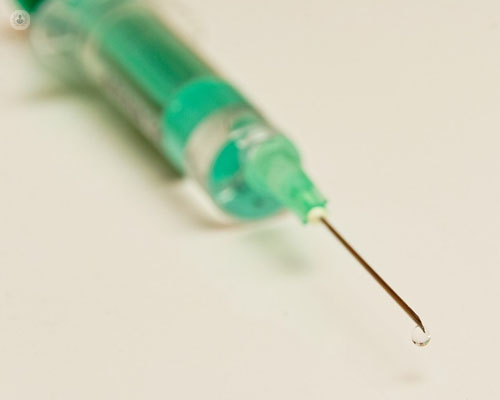Intradermal testing: What is it used for? | Top Doctors
What is an intradermal test?
An intradermal test is a technique used to identify which substances you have an allergic reaction to. It is a skin test that gives a reliable diagnosis and is aimed at trying to reproduce an allergic reaction on the skin to see which substance you are allergic to. Allergies occur when an allergen enters the body and the immune system responds to it by producing antibodies called immunoglobulin E (lgE).
Immunoglobulin is associated with mast cells that release chemical mediators, including histamine, when they come into contact with allergens. These chemical mediators are responsible for producing the symptoms typical of allergic reactions.

What does it involve?
The intradermal test consists of injecting small quantities of substances or allergens into your skin. Disposable, 26-gauge, 1 ml tuberculin syringes are used for this purpose. The test site is marked and cleaned with alcohol. Keeping the skin taut, the allergy specialist will insert the needle parallel to the surface of the skin, at as shallow an angle as possible.
As this is a very sensitive procedure, the antigen solutions must be more diluted than they would be in a skin prick test. This test should only be carried out if the results of a prick test are negative or doubtful, as it can cause an anaphylactic reaction if performed on highly sensitised individuals.
In addition, physiological serum will be used as a negative control method to rule out false positives, since the intradermal test is more sensitive but not as specific as the prick test or other tests.
Why is it performed?
This test is usually performed if the prick test is negative, but there remains a suspicion that you may be allergic to certain substances. The results will be observed over a period of 10 to 30 minutes. The test gives a positive result if a wheal of about 5 mm and erythema of about 10 mm appear.
Preparing for an intradermal test:
Before having the intradermal test you must stop taking antihistamine medication. Three days before the test is usually enough, but with some medications a longer interval may be necessary.
What do you feel during the test?
During the intradermal test you will notice an allergic reaction to the substance in question. However, this will always be controlled by an allergy specialist, who will assess the signs of an allergic reaction.
The reaction will manifest itself as mild hives, inflammation and redness, with the formation of a wheal measuring between 5 to 10 mm. Also, in the case of a delayed reaction to the test, a second reading of the test should be made after 6 hours.
Meaning of abnormal results:
The specialist will analyse how the reaction to the injected substance progresses. So, if they see any exaggerated skin rash or a possible anaphylactic reaction, they will react immediately in order to halt the symptoms caused by the allergen.